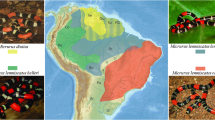Abstract
Acute experiments were performed on spinal rats to study the protective actions of Vipera raddei venom after section of the sciatic nerve. Individual spike activity was recorded from interneurons and motoneurons in the lumbar segment of the spinal cord, induced by stimulation of the sciatic nerve and the extensor (gastrocnemius) and flexor (peroneus communis) nerves on the lesioned and symmetrical intact sides in controls and after daily injections of venom for four weeks. In animals not treated with Vipera raddei venom, the lesioned side lacked interneuron and motoneuron responses to stimulation of the extensor and flexor nerves of the distal stump, though these were present on stimulation of the contralateral side; responses were the inverse of this on the intact side, due to the failure of the proximal and distal stumps to fuse, as also demonstrated by atrophy of the distal stump of the sciatic nerve and the absence of movement activity in the lesioned limb. Treatment with Vipera raddei venom led to restoration, by four weeks, of interneuron and motoneuron responses on the lesioned side on stimulation of the ipsilateral nerves and on the intact side by stimulation of the contralateral nerves; this is the result of apparent fusion of the proximal and distal stumps of the lesioned nerve. Further evidence for this was hypertrophy of the distal stump and restoration of movement activity in the lesioned limb. These results show that Vipera raddei venom has potential for use in regenerating damaged peripheral nerves.
Similar content being viewed by others
REFERENCES
D. G. Mukhamedova, The Immunomodulatory Effects of Turkmenistan Snake Venom [in Russian], Author's abstract of thesis for doctorate in medical sciences, Ashkhabad (1996).
W. C. Bowman and G. A. Sutherland, in: Handbook of Experimental Pharmacology, Springer, Berlin (1986), pp. 419–443.
R. Cook, Potassium Channels: Structure, Classification, Function and Therapeutic Potential, Ellis Horwood Ltd., Chichester (1990).
D. W. Cushman, et al., Enzyme Inhibitors and Drugs, Macmillan, London (1980), pp. 2310–2478.
A. A. Galoyan, J. S. Sarkissian, T. K. Kipriyan, E. J. Sarkissian, Y. Kh. Grigorian, R. M. Sulkhanyan, and T. S. Khachatryan, “Protection against neuronal injury by hypothalamic peptides and by dexamethasone,” Neurochem. Res., 25, No.12, 1567–1578 (2000).
A. A. Galoyan, J. S. Sarkissian, T. K. Kipriyan, E. J. Sarkissian, E. A. Chavushyan, R. M. Sulkhanyan, I. E. Meliksetyan, S. S. Abrahamyan, Y. Kh. Grigorian, Z. A. Avetisyan, and N. A. Otieva, “Protective effect of the new hypothalamic peptides against cobra venom and trauma induced neuronal injury,” Neurochem. Res., 26, No.8, 1023–1038 (2001).
R. Hughes, in: Handbook of Experimental Pharmacology, Springer, Berlin (1986), pp. 259–543.
J. Jankovic and M. Hallett, Therapy and Botulinum Toxin, Marcel Dekker, New York (1994).
D. Jerusalinsky and A. L. Harvey, Trends Pharmacol. Sci., 15, 424–430 (1994).
X. B. Li, M. J. Chen, D. Q. Lei, B. Yang, G. S. Liao, Y. Y. Shu, and S. X. Tang, “Bioactivities of nerve growth factor from Chinese cobra venom,” J. Nat. Toxins, 8, No.3, 359–362 (1999).
B. Rudy, “Diversity and ubiquity of K channels,” Neurosci., 25, 729–749 (1988).
J. B. Stenlake, “New neuromuscular blocking agents,” in: Handbook of Experimental Pharmacology, Springer, Berlin (1986), pp. 263–276.
X. Zhou, Q. Lin, and W. D. Willis, “Enhanced phosphorylation of NMDA receptor 1 subunits in spinal cord dorsal horn and spinothalamic tract neurons after intradermal injection of capsaicin in rats,” J. Neurosci., 20, No.18, 6989–6999 (2000).
Author information
Authors and Affiliations
Additional information
__________
Translated from Rossiiskii Fiziologicheskii Zhurnal imeni I. M. Sechenova, Vol. 90, No. 12, pp. 1441–1456, December, 2004.
Rights and permissions
About this article
Cite this article
Chavushyan, V.A., Gevorkyan, A.Z., Avakyan, Z.E. et al. The Protective Effect of Vipera Raddei Venom on Peripheral Nerve Damage. Neurosci Behav Physiol 36, 39–51 (2006). https://doi.org/10.1007/s11055-005-0161-7
Received:
Revised:
Issue Date:
DOI: https://doi.org/10.1007/s11055-005-0161-7




